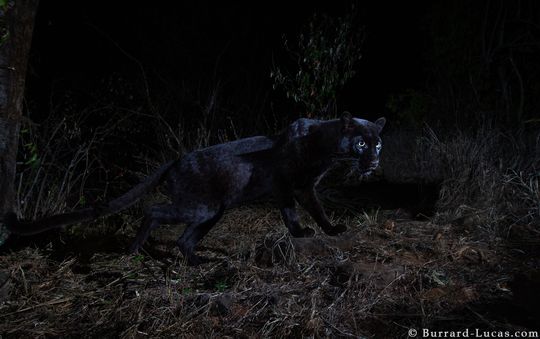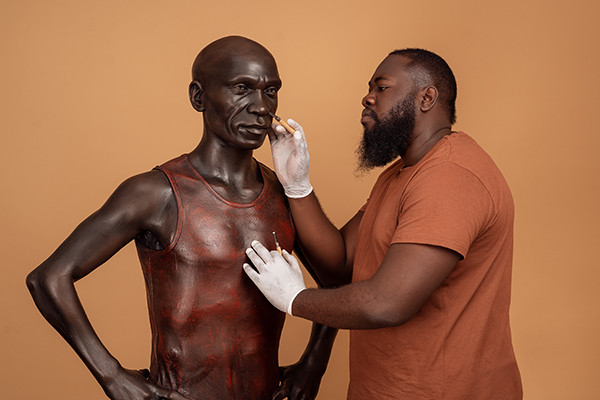
Western media gets it wrong with headlines about ‘black leopard’ sighting

On Tuesday several media outlets reported the sighting of an “extremely rare black leopard” in Africa.
National Geographic was among the first to make the claim. with its headline “Black leopard confirmed in Africa for first time in 100 years”.
USA Today, The Daily Mail did so as well. CNN used “African black leopard photographed for the first time in over 100 years” in a story on its website.
Unfortunately, while the pictures were impressive, The headlines were not accurate.
The animal photographed is not a member of a separate species. It is a leopard that has melanism, or a darkening of body tissues caused by excessive melanin. The condition does occur in a variety of animals, including cats.
The stories, and erroneous headlines, came after wildlife photographer Will Burrard-Lucas posted several photos of a melanistic leopard to his blog and its 190,000 followers. Burrard-Lucas, using a camera trap and a high quality camera, captured the images last spring in Kenya’s Lakipia County.
Burrard-Lucas, in an interview with The Washington Post, stressed that while his photos did capture images of a melanistic leopard, the headlines wound up spreading the false notion that these animals have not been seen or photographed in Africa in over 100 years.
The Ol Ari Nyiro Conservancy in Kenya came forward shortly after Tuesday’s media-generated sensation and produced evidence of high-quality image from 2007 of a melanistic leopard.
Phoebe Okall, a photographer with the Kenya-based Daily Nation, photographed one in 2013 at the nearby Ol Jogi Conservancy.
There are other recorded sightings a melanistic leopard in recent times

During his Washington Post interview, Burrard-Lucas explained his frustration at how Western media missed the point and distorted the story.
“All they’re seeing is a headline and a tweet,” he said. “They have a valid point, but my blog post is clear. People who now understand how it got used are understanding.”
People in Africa knew the animal existed. They’ve seen it before. And a few of them say the inaccurate headlines are not just examples of poor journalism but of racism as well.
https://twitter.com/bonifacemwangi/status/1095776278244925440/photo/1?ref_src=twsrc%5Etfw%7Ctwcamp%5Etweetembed&ref_url=https%3A%2F%2Fwww.smh.com.au%2Fenvironment%2Fconservation%2Fblack-leopard-photos-are-awesome-but-not-first-in-100-years-20190214-p50xsq.html
Carnivore ecologist Mordecai Ogada, argued this is another example of “conservation apartheid,” writing that, seemingly, “nothing exists in Africa until a white person observes it.” Ogada has done conservation work in Kenya for over a decade. He and a team of scientists trapped a melanistic leopard during their research in 2001.
Burrard-Lucas did added an addendum to the blog post that started the controversy. “For clarification, I am not claiming that these are the first photos of a black leopard taken in Africa. I do however believe that they are the first high-quality camera trap photographs.”
A few western media outlets have also gone back and altered their inaccurate headlines.






